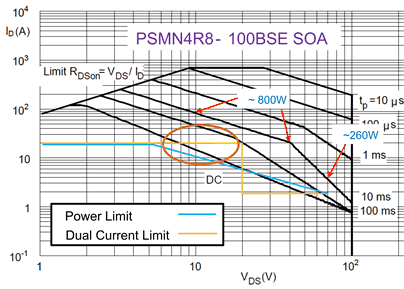ZHCSGZ0B October 2017 – November 2017 TPS23525
PRODUCTION DATA.
- 1 特性
- 2 应用
- 3 说明
- 4 修订历史记录
- 5 Pin Configuration and Functions
- 6 Specifications
- 7 Parameter Measurement Information
- 8 Detailed Description
-
9 Application and Implementation
- 9.1 Application Information
- 9.2
Typical Application
- 9.2.1 Design Requirements
- 9.2.2
Detailed Design Procedure
- 9.2.2.1 Selecting RSNS
- 9.2.2.2 Selecting Soft Start Setting: CSS and CSS,VEE
- 9.2.2.3 Selecting VDS Switch Over Threshold
- 9.2.2.4 Timer Selection
- 9.2.2.5 MOSFET Selection and SOA Checks
- 9.2.2.6 Input Cap, Input TVS, and OR-ing FET selection
- 9.2.2.7 EMI Filter Consideration
- 9.2.2.8 Under Voltage and Over Voltage Settings
- 9.2.2.9 Choosing RVCC and CVCC
- 9.2.2.10 Power Good Interface to Downstream DC/DC
- 9.2.3 Application Curves
- 10Power Supply Recommendations
- 11Layout
- 12器件和文档支持
- 13机械、封装和可订购信息
8.3.1 Current Limit
The TPS23525 utilizes two current limit thresholds:
- ICL1 – also referred to as high current limit threshold, which is used when the VDS of the hot swap FET is low.
- ICL2 – lower current limit threshold, which is used when the VDS of the hot swap FET is high.
This dual level protection scheme ensures that the part has a higher chance of riding out voltage steps and other transients due to the higher current limit at low VDS, while protecting the MOSFET during start into short and hot-short events, by setting a lower current limit threshold for conditions with high VDS. The transition threshold is programmed with a resistor that is connected from the drain of the hot swap FET to the D pin of the TPS23525. The figure below illustrates an example with a ICL1 set to 25 A and ICL2 set to 3 A. Note that compared to a traditional SOA protection scheme this approach allows better utilization of the SOA in the 10 V < VDS.< 40-V range, which is critical in riding through transients and voltage steps.
Note that in both cases the TPS23525 regulated the gate voltage to enforce the current limit. However, this regulation is not very fast and doesn’t offer the best protection against hot-shorts on the output. To protect in this scenario a fast comparator is used, which quickly pulls down the gate in case of severe over current events (2x bigger than VCL1).
 Figure 8. Dual Current Limit vs FET Power Limit
Figure 8. Dual Current Limit vs FET Power Limit